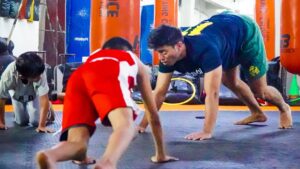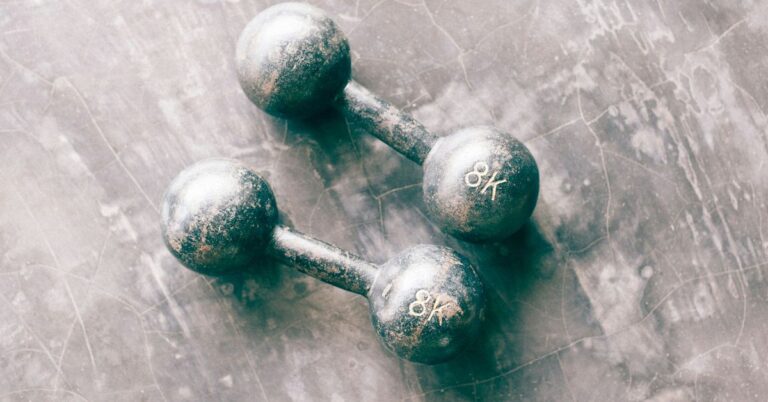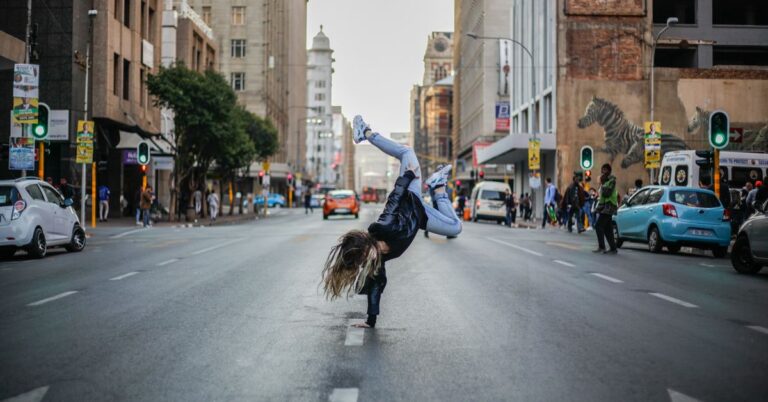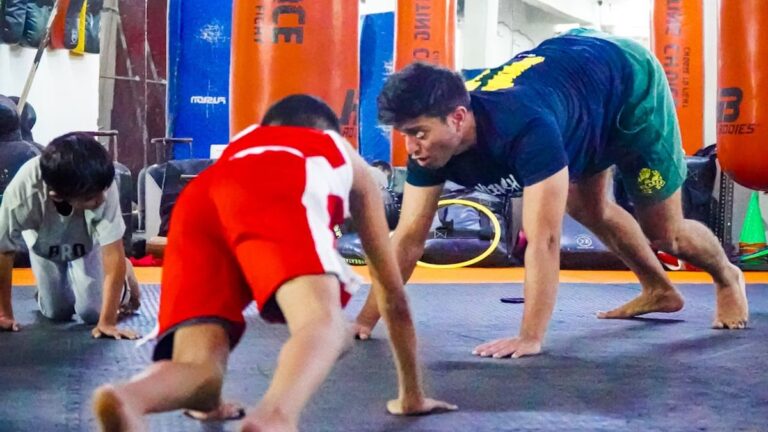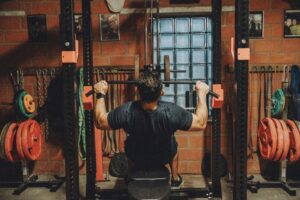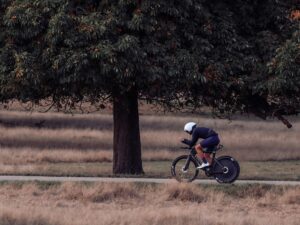Unleashing Your Inner Athlete Through Mindful Movement
Have you ever watched an athlete in action and felt a twinge of envy, wishing you could channel that same energy and grace? You’re not alone. Many of us harbor that innate desire to tap into our athletic potential, yet we often dismiss it as a distant dream. But what if I told you that the key to unlocking your inner athlete might not lie solely in rigorous training or unrealistic fitness goals? Instead, it could be found through the practice of mindful movement.
Mindful movement is a holistic approach that combines physical activity with mental awareness. It encourages you to connect with your body, understand its limits, and embrace the process of movement as a form of self-expression. This journey isn’t just about breaking a sweat; it’s about learning to appreciate your body’s capabilities and fostering a deeper relationship with yourself. So, let’s dive into the world of mindful movement and discover how it can help unleash the athlete within you.
What is Mindful Movement?
At its core, mindful movement is a practice that integrates mindfulness—being present and fully engaged in the moment—with physical activity. It encompasses a range of disciplines, from yoga and tai chi to dance and even traditional sports, focusing on awareness of breath, posture, and intention. The beauty of mindful movement is its inclusivity; it can be tailored to fit anyone’s preferences and abilities.
Imagine this: you’re in a yoga class, flowing through a series of poses. Instead of merely going through the motions, you tune into your breath, notice the sensations in your muscles, and observe your thoughts without judgment. Suddenly, the practice transforms from a mere workout into a meditative experience that cultivates both physical strength and mental clarity.
The Science Behind Mindful Movement
Research suggests that mindful movement has numerous benefits for both the mind and body. A significant number of studies indicate that practice can reduce stress, improve focus, and enhance emotional well-being. According to Dr. Jon Kabat-Zinn, the founder of the Mindfulness-Based Stress Reduction program, mindfulness can lead to profound changes in how we perceive and respond to challenges.
Furthermore, mindfulness practices have been shown to enhance athletic performance. A 2018 study published in the journal Frontiers in Sports found that athletes who engaged in mindfulness training experienced improved concentration and reduced anxiety levels during competitions. The researchers noted that mindful movement encourages athletes to stay present, enabling them to react instinctively and perform at their best.
Benefits of Mindful Movement
So, what can you expect to gain from incorporating mindful movement into your routine? Here are some benefits to consider:
- Enhanced Body Awareness: By paying attention to your body’s movements and sensations, you develop a greater understanding of your physical capabilities and limitations.
- Stress Reduction: Engaging in mindful movement can help alleviate stress and anxiety, allowing you to cultivate a sense of calm and focus.
- Improved Flexibility and Strength: Regular practice enhances overall flexibility, strength, and balance, which are essential for athletic performance.
- Boosted Mental Clarity: Mindful movement sharpens your cognitive abilities, improving focus and decision-making skills.
- Greater Enjoyment: When you combine movement with mindfulness, you’re more likely to enjoy the process, making it easier to stick with your fitness routine.
How to Get Started with Mindful Movement
Ready to unleash your inner athlete? Here’s a step-by-step guide to help you get started with mindful movement:
1. Find Your Practice
The first step is to explore different forms of mindful movement. You might be drawn to yoga, Pilates, tai chi, or even dance. If you’re unsure where to start, consider attending a few classes or workshops to see what resonates with you. (I vividly remember my first yoga class—let’s just say it was a humbling experience, but oh, the bliss afterward was worth it!)
2. Create a Space for Movement
Designate a space in your home or find a quiet area outdoors where you can practice without distractions. This space should feel comfortable and inviting, allowing you to focus entirely on your movement.
3. Start with Breath Awareness
Before diving into any physical practice, take a few moments to connect with your breath. Close your eyes, inhale deeply through your nose, and exhale slowly through your mouth. This simple exercise grounds you in the present moment and prepares you for mindful movement.
4. Move with Intention
As you begin your practice, approach each movement with intention. Focus on the sensations in your body, the rhythm of your breath, and the thoughts that arise. If your mind wanders (and it likely will), gently guide your attention back to your body and breath. This is where the magic happens.
5. Embrace Imperfection
As you embark on your mindful movement journey, remember that it’s okay to be imperfect. Some days you’ll flow effortlessly, while others may feel clunky and awkward. Embrace these moments as part of the process; it’s all about learning and growth.
Mindful Movement Practices to Explore
To give you a head start on your journey, here are some popular mindful movement practices that can help you connect with your inner athlete:
Yoga
Yoga is perhaps the most well-known form of mindful movement, focusing on the connection between breath and movement. With various styles ranging from gentle Hatha to dynamic Vinyasa, there’s something for everyone. Whether you’re looking to improve flexibility, gain strength, or simply relax, yoga offers a myriad of benefits.
Tai Chi
Tai Chi is often described as “meditation in motion.” This ancient Chinese martial art combines slow, flowing movements with deep breathing to promote relaxation and balance. It’s particularly beneficial for enhancing coordination and reducing stress—perfect for anyone looking to cultivate a sense of calm.
Dance
If you’re more of a free spirit, consider dance as your mindful movement practice. Whether it’s a structured class or spontaneous jiving in your living room, dancing encourages self-expression and creativity while also improving cardiovascular fitness. Plus, it’s hard not to smile while dancing (unless you’re channeling your inner “dad dancer,” which—let’s be real—has its own charm).
Walking Meditation
Walking meditation is a fantastic way to integrate mindfulness into your daily life. Instead of rushing from point A to B, take a few moments to walk slowly and intentionally. Pay attention to each step, the sensations in your feet, and the rhythm of your breath. You’ll be surprised at how grounding this simple practice can be.
Overcoming Obstacles
Embarking on a new journey can be daunting, and it’s common to encounter obstacles along the way. Perhaps you struggle with self-doubt, or maybe you feel overwhelmed by the idea of adopting a new practice. Here are a few tips to help you navigate these hurdles:
Be Patient
Mindful movement is a practice, and like any new skill, it takes time to develop. Be patient with yourself, and don’t rush the process. Celebrate small victories, whether it’s achieving a new pose in yoga or simply feeling more present during your movement.
Set Realistic Goals
Instead of aiming for perfection, set achievable goals that align with your abilities and interests. Perhaps you want to practice for 10 minutes a day or attend one class per week. These small, manageable goals will help you stay motivated without feeling overwhelmed.
Find a Community
Joining a community of like-minded individuals can provide support and encouragement on your journey. Whether it’s a local yoga studio, a tai chi class in the park, or an online group, connecting with others who share your passion can make the experience more enjoyable.
Mindful Movement in Everyday Life
One of the beautiful aspects of mindful movement is that it can be integrated into your daily life. You don’t have to reserve it for a designated practice; you can find opportunities to be mindful throughout your day. Here are some ideas:
- Mindful Commuting: Instead of scrolling through your phone during your commute, take a moment to notice your surroundings. Engage your senses—what do you see, hear, and smell?
- Mindful Eating: Turn mealtime into a mindful practice by savoring each bite. Pay attention to the flavors, textures, and aromas of your food.
- Mindful Stretching: Take breaks throughout your day to stretch and reconnect with your body. This can help alleviate tension and improve circulation.
- Mindful Interactions: Practice being fully present during conversations. Listen actively and engage with the person you’re speaking to, rather than getting lost in your thoughts.
Personal Reflections and Anecdotes
As I reflect on my own journey with mindful movement, I can’t help but smile at the memories. There was a time when I approached fitness with a rigid mindset—counting reps, tracking calories, and striving for an ideal image. It wasn’t until I stumbled upon a yoga class that my perspective began to shift. I remember the instructor saying, “Your practice is your own,” and it struck me like a lightning bolt. Suddenly, the pressure to perform melted away, and I found joy in simply moving my body.
Since then, I’ve embraced a wide range of mindful movement practices, from hiking in nature to dancing like no one’s watching (which, by the way, is a liberating experience). Each practice has taught me something new about my body, my mind, and the importance of being present.
A Final Thought
Unleashing your inner athlete doesn’t require you to run marathons or lift heavy weights. Instead, it calls for a willingness to explore, connect, and embrace the beautiful journey of movement. Through mindful movement, you can foster a deeper sense of self-awareness, enjoy the process, and cultivate the athletic spirit that resides within you.
So, lace up those sneakers, roll out your yoga mat, or simply step outside for a mindful walk. The path to discovering your inner athlete is waiting, and the only thing standing between you and that revelation is the first step. Happy moving!


